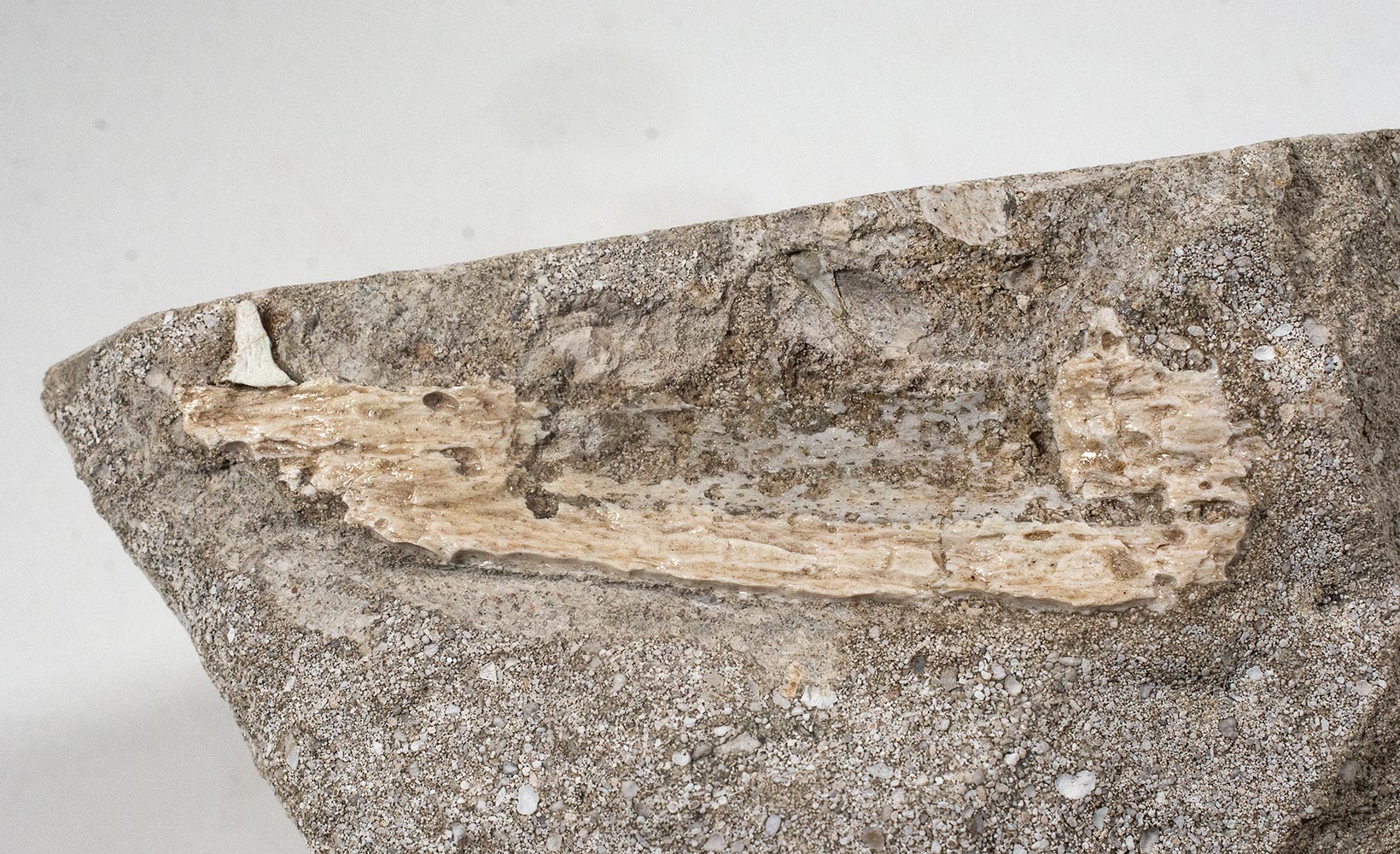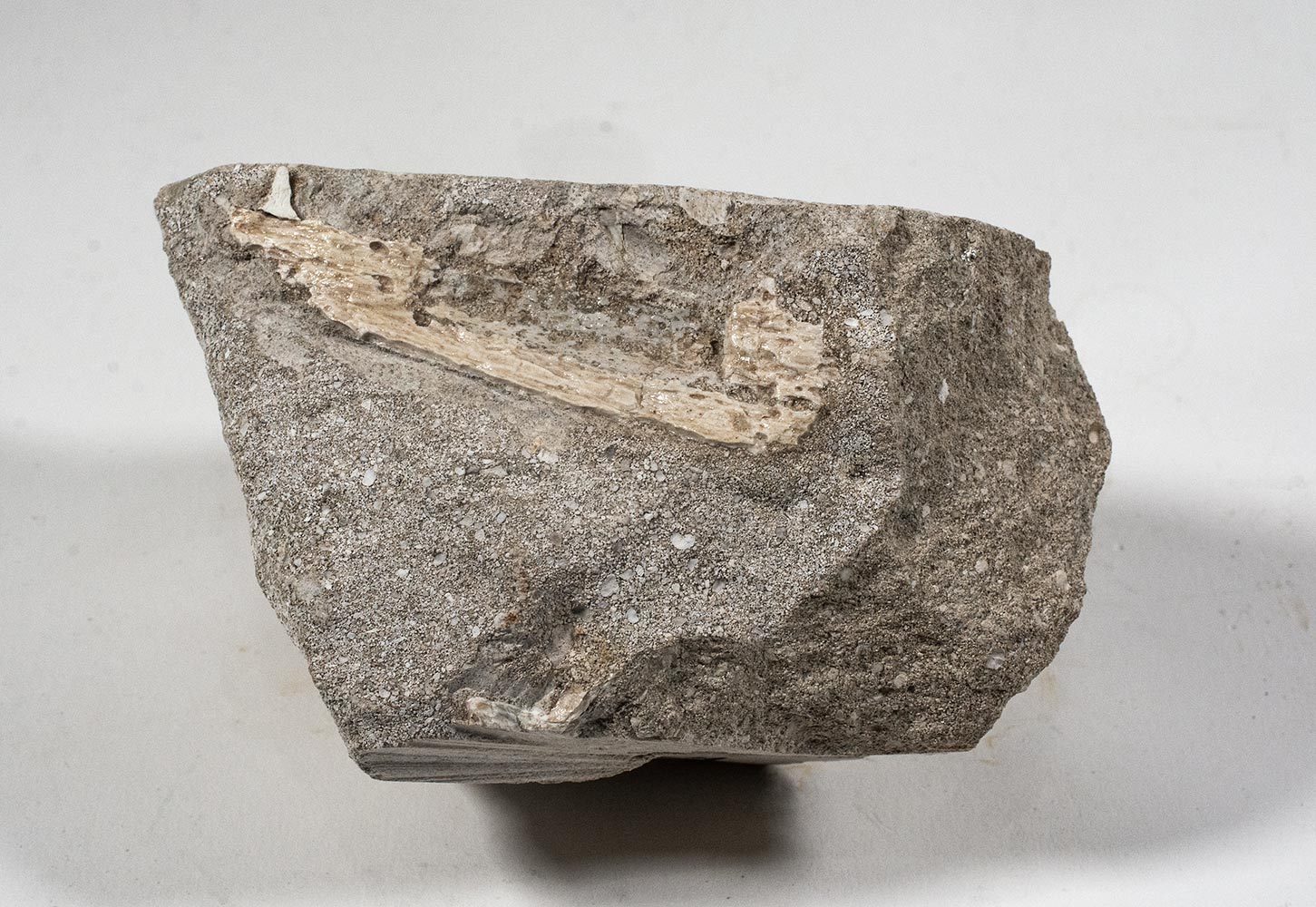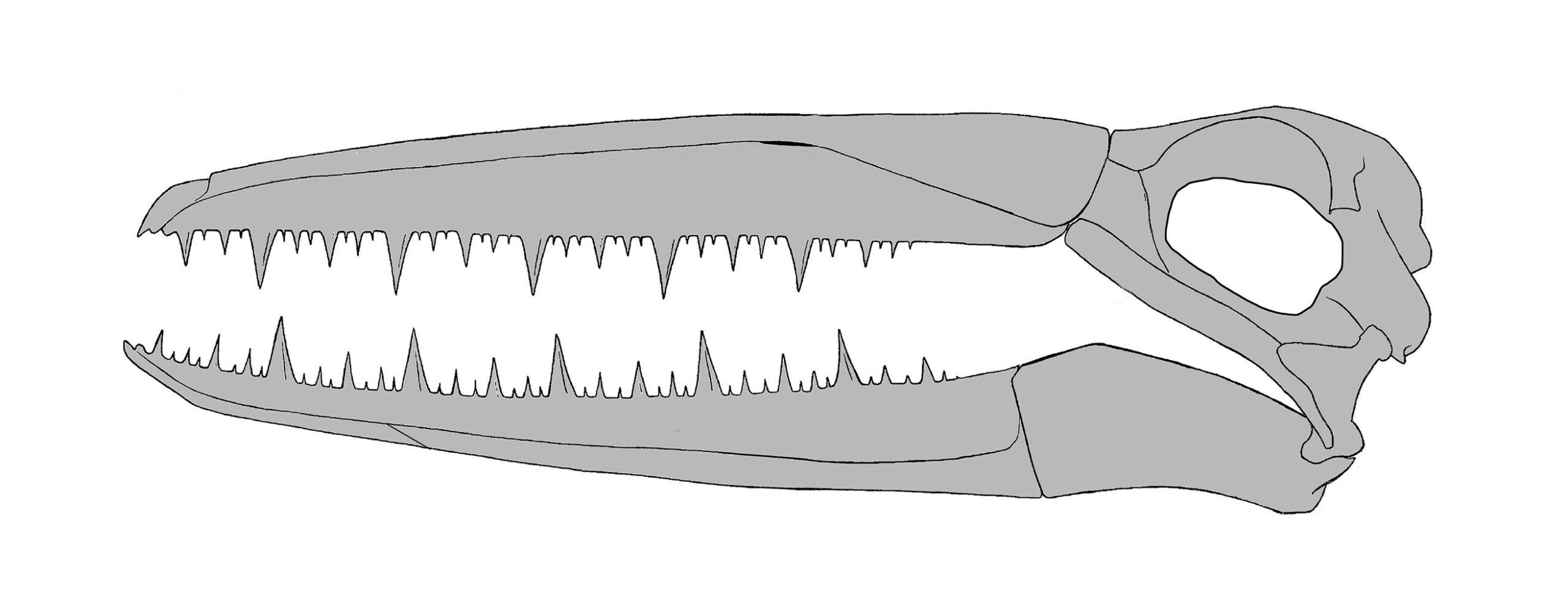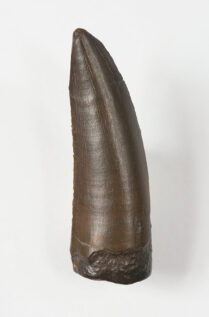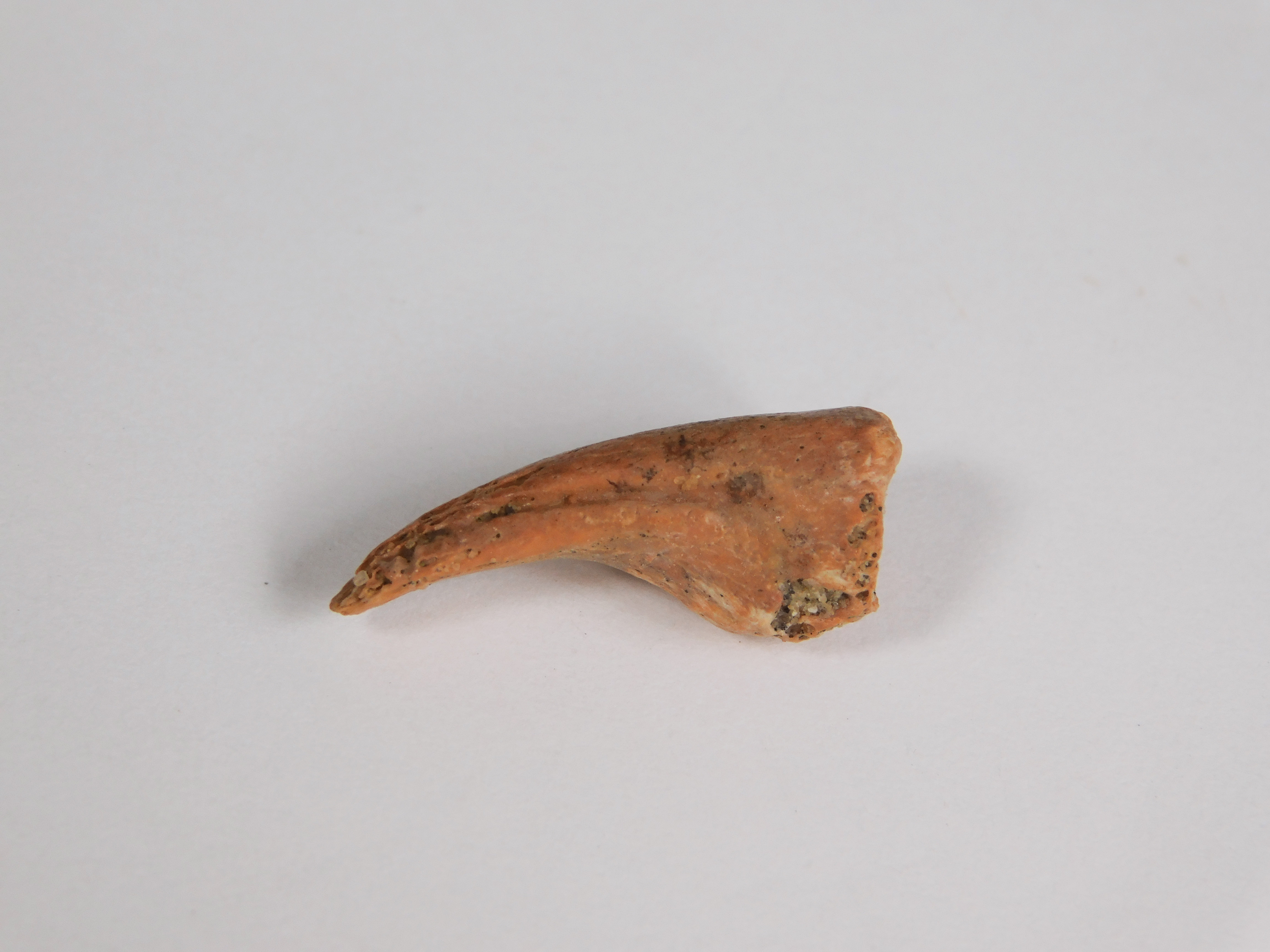Description
Dasornis toliapica (Owen, 1873)
Early Eocene
Ouled abdoun basin, phosphate deposits
73mm jaw on 113mm slab
Dasornis is an extinct genus of large seabird that lived during the early Eocene epoch, around 50 million years ago. It belonged to the family Pelagornithidae, which is also known as the “bony-toothed birds” or “pseudotooth birds” due to the tooth-like bony projections along the edges of their beaks. These birds were part of a group known as the Pelagornithidae, which were characterized by their large size and adaptations for a life spent soaring over the oceans.
Key characteristics of Dasornis include:
Size: Dasornis was one of the largest known birds, with an estimated wingspan of up to 5 meters (16 feet), making it comparable in size to the largest albatrosses of today.
Beak and Pseudoteeth: The most distinctive feature of Dasornis and other pelagornithids is their beak, which was lined with bony projections resembling teeth. These pseudoteeth were not true teeth but served a similar function in grasping slippery prey such as fish and squid.
Fossil Record: Fossils of Dasornis have been primarily found in Paleocene through Eocene rocks from near shore environments.
Flight Adaptations: The large wingspan and light, pneumatic (air-filled) bones suggest that Dasornis was a proficient glider, capable of long-distance flights over the ocean in search of food.
Dasornis and its relatives provide valuable insights into the diversity of prehistoric avian life and the evolutionary history of seabirds. Their adaptations illustrate how birds have evolved various strategies to exploit different ecological niches, particularly in marine environments.

